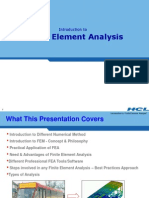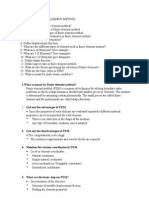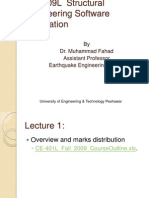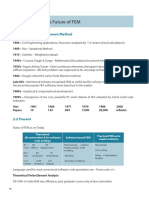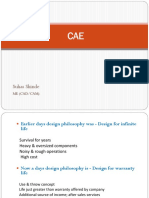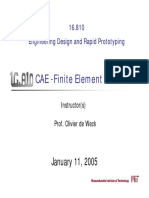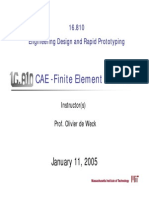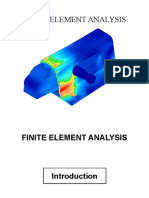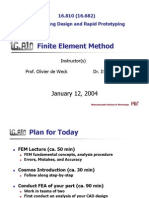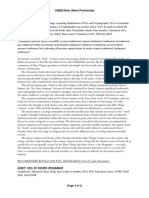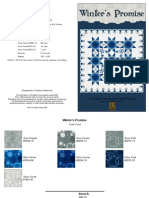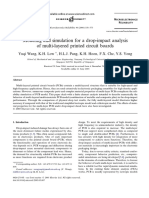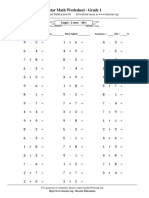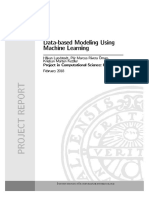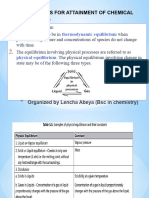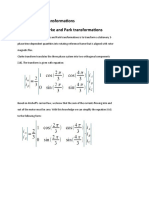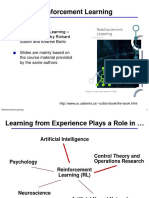🧠 Finite Element Method (FEM)
1. What is FEM? Why is it important?
The Finite Element Method (FEM) is a numerical technique used to find approximate solutions to boundary
value problems for partial differential equations (PDEs). It divides a large system into smaller, simpler parts
called finite elements. These are then solved independently and assembled to give an overall solution.
Importance:
• Used in structural, thermal, and fluid analysis.
• Helps engineers simulate and optimize real-world products virtually.
• Saves cost and time by reducing the need for physical prototypes.
2. What are the basic steps of the FEM process?
1. Preprocessing: Define geometry, material properties, boundary conditions, and mesh.
2. Discretization: Divide the model into finite elements (meshing).
3. Formulation: Derive element equations (usually using shape functions and stiffness matrices).
4. Assembly: Combine all elements into a global stiffness matrix.
5. Apply Boundary Conditions: Add constraints and external loads.
6. Solve: Calculate unknown nodal values like displacements.
7. Postprocessing: Analyze results—stress, strain, deformation.
3. What are the different element types (1D, 2D, 3D)? When do you use each?
• 1D Elements: Used for trusses, beams, springs (only length matters).
• 2D Elements: Used for thin structures like plates and shells (e.g. in car bodies).
• 3D Elements: Used for solid parts with thickness in all directions (e.g. engine blocks).
4. Explain discretization (meshing) and convergence. Why does mesh refinement
matter?
• Discretization: Process of breaking the model into finite elements. It transforms a continuous
domain into a finite set of elements.
• Convergence: A solution is said to converge when it becomes stable as the mesh is refined.
• Why Mesh Refinement Matters: Finer meshes give more accurate results but increase
computational time. The goal is to find an optimal balance.
1
�5. What are shape functions and why are polynomials used?
Shape functions interpolate the solution within each element based on nodal values. Polynomials are used
because:
• They're easy to integrate and differentiate.
• They provide good approximations for the physical behavior of elements.
6. What is the global stiffness matrix and how is it assembled?
The global stiffness matrix [K] represents the system's resistance to deformation. It's formed by:
• Computing local element stiffness matrices.
• Assembling them into a large matrix using connectivity (nodal relationships).
Equation: [K]{u} = {F}, where {u} is displacement and {F} is force.
7. What are degrees of freedom (DOF)?
DOF represents the independent displacements or rotations allowed at each node.
• In 2D: Each node may have 2 DOF (x and y displacements).
• In 3D: Each node may have 3 DOF (x, y, z displacements).
Global Matrix Size: Depends on total DOFs. If you have 100 nodes and each node has 3 DOF → Matrix size
is 300x300.
8. What is the weak formulation in FEM?
It’s a way to transform the governing differential equations into an integral form that is easier to solve
numerically. Instead of solving the equation directly, FEM uses the principle of virtual work or weighted
residual methods to derive a solvable system.
9. Discuss error sources in FEM:
• Modeling Simplification: Real-world geometry is often simplified.
• Discretization Error: Coarse mesh may miss stress concentrations.
• Numerical Errors: Due to round-off and integration schemes.
• Contact Assumptions: Incorrect contacts lead to unrealistic results.
2
�⚙️ Finite Element Analysis (FEA)
10. What is FEA and how does it differ from FEM?
• FEM: The mathematical foundation.
• FEA: The practical application of FEM using software like ANSYS or HyperWorks to simulate physical
behavior.
11. What is the process workflow from preprocessing to postprocessing?
1. Import Geometry
2. Assign Materials
3. Apply Boundary Conditions & Loads
4. Mesh the Model
5. Run Solver
6. View Results (stress, strain, deformation)
12. What is steady-state vs transient analysis?
• Steady-State: Conditions are constant over time (e.g., heat flow after equilibrium).
• Transient: Time-dependent behavior (e.g., crash simulation, temperature change).
13. Define stress singularity vs stress concentration:
• Stress Singularity: Infinite stress at sharp corners or point loads (mathematical artifact).
• Stress Concentration: High but finite stress near geometric discontinuities (holes, notches).
Mitigation: Refine mesh, avoid sharp corners, use averaged stresses.
14. What are shear locking and hourglassing?
• Shear Locking: Occurs in low-order elements (like linear triangles) under bending. Causes stiffness
overestimation.
• Hourglassing: Occurs in reduced integration elements causing unrealistic deformation patterns.
Mitigation: Use higher-order or reduced integration elements, or special hourglass control methods.
15. Explain submodeling:
It’s a technique where a small, detailed part of a large model is analyzed separately using boundary results
from the coarse model. Used when detailed analysis is needed in a specific region.
3
�16. Describe fatigue, S-N curves, stiffness:
• Fatigue: Material failure under repeated loading.
• S-N Curve: Stress vs Number of cycles to failure.
• Stiffness: Resistance to deformation. Defined as Force/Displacement.
🧩 CAE Tools & Concepts
ANSYS
17. What is ANSYS? Types of analysis it performs?
ANSYS is a simulation software used for structural, thermal, fluid, and electromagnetic analysis.
Types:
• Static Structural
• Modal Analysis
• Thermal
• CFD (with Fluent or CFX)
18. ANSYS Mechanical vs Workbench
• ANSYS Mechanical: Solver interface for structural problems.
• ANSYS Workbench: Graphical environment where different solvers are integrated with drag-and-
drop modules.
19. What is meshing in ANSYS?
Meshing divides geometry into small elements.
• Element Types:
• Tetrahedral (4-node, 10-node)
• Hexahedral (brick elements)
• Shells and beams for thin structures
20. Workflow in ANSYS:
1. Import or create geometry
2. Assign materials
3. Apply loads & constraints
4. Generate mesh
4
� 5. Solve
6. Interpret results in Postprocessing
HyperWorks / HyperMesh
21. What modules does HyperWorks have?
• HyperMesh: Preprocessor (geometry, mesh, BCs)
• HyperView: Postprocessor (visualizing results)
• OptiStruct, Radioss: Solvers
22. Meshing quality criteria:
• Skewness: Measures deviation from ideal shape
• Jacobian: Element distortion check
• Aspect Ratio: Ratio of longest to shortest edge
• Warpage, Angle Checks: Ensure mesh regularity
23. Hexa vs Tetra Mesh:
• Hexa: More accurate, lower computational cost, but hard to generate.
• Tetra: Easier for complex shapes, less accurate, more elements needed.
24. Setting up components and assemblies:
• Components: Individual parts
• Assemblies: Collection of components with defined contacts (welded, bolted, glued)
25. Mesh validation:
• Use tools to detect:
• Free edges
• Duplicate nodes
• T-connections
• Poor quality elements
5
�🧑💼 Interview-style Discussion & Behavioral
26. Why is FEA important in engineering?
• Reduces cost and time in product development
• Enables virtual testing of complex real-world behavior
• Helps optimize material and design performance
27. Describe an FEA project:
Include:
• Problem Statement
• Tool Used (ANSYS, HyperMesh)
• Steps Taken
• Challenges (mesh refinement, BCs)
• Outcome (stress pattern, failure point, optimization)
28. How to validate boundary conditions:
• Visual checks
• Reaction force balance
• Displacement trends
• Sanity check with hand calculations or simplified models
29. Software preference:
"I prefer ANSYS for its user-friendly GUI and strong solver integration, especially for structural and thermal
simulations. HyperMesh is better for advanced meshing and model setup."
30. ANSYS vs HyperWorks:
• ANSYS: Easier to learn, well-integrated modules
• HyperWorks: Advanced pre/post processing, better mesh control
31. Most challenging FEA problem:
Think of a problem involving:
• Complex geometry
• Nonlinear material
6
� • Contact/friction conditions
• High-performance computing requirements
32. Should all engineers learn FEA?
Yes, at least basic understanding is essential:
• For interpreting simulation results
• Collaborating with CAE engineers
• Making design decisions based on virtual tests











